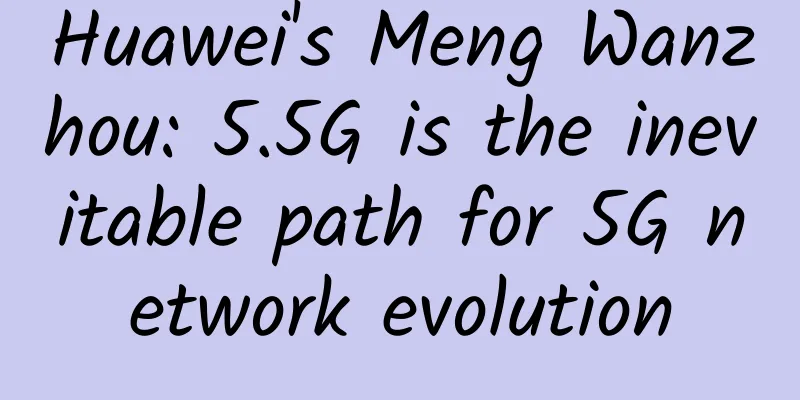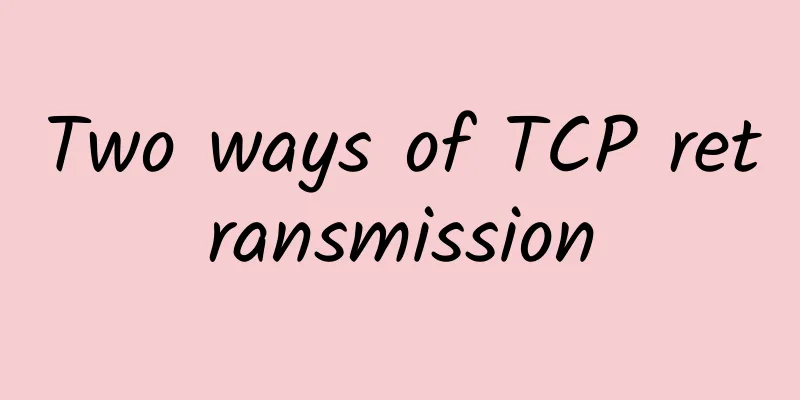Interview blitz: Is TCP reliable? Why?

|
Author | Lei Ge Source | Java interview questions analysis (ID: aimianshi666) Please contact for authorization if you wish to reprint (WeChat ID: GG_Stone) Compared with UDP, TCP has three main features: connected, reliable, and data stream-oriented. The so-called "connected" refers to the connection management mechanism in TCP, which is the famous three-way handshake and four-way handshake. Just like making a phone call, if you want to communicate normally, you must first establish a connection with the other party. This is the so-called "connected". We will talk about the data stream-oriented mechanism later. The topic we are going to discuss today is: How does TCP ensure reliability? The reason why TCP can ensure reliability is mainly through the following 6 means:
Next, let’s take a closer look at the specific implementation of these methods. 1. ChecksumThe data format of the TCP protocol is shown in the figure below: (Image source: Xuxurushengxxrs) From the above figure, we can see that the "checksum" is a data stored in the TCP header. The TCP sender and receiver will use the same algorithm to calculate a 16-bit checksum based on the sent data, and the checksum will be sent to the receiver together with the data. After receiving the data, the receiver will generate a new checksum based on the received data, and then compare the new checksum with the passed checksum. If the checksum is the same, it means that the data has not changed during the transmission process and is valid data. Otherwise, it is invalid data and can be discarded. Checksum basic algorithmThe checksum algorithms of TCP/UDP/IP and other protocols are the same, and they all treat the data stream as a 16-bit integer stream for repeated superposition calculations. In order to calculate the checksum, first set the checksum field to 0, then perform the binary complement summation on each 16 bits in the valid data range, and store the result in the checksum field. If the data length is an odd number, add a byte of 0. When the data is received, the binary complement summation is also performed on each 16-bit number in the valid data range. Since the receiver includes the checksum in the header of the sender in the calculation process, if there is no error in the header during transmission, the result calculated by the receiver should be all 0 or all 1 (depending on the implementation, the essence is the same). If the result is not all 0 or all 1, it indicates data error. 2. Confirm the responseThe confirmation response mechanism is a key means to ensure the reliability of message delivery. It is also one of the most commonly used technologies in almost all message middleware (MQ). For example, mainstream message middleware RabbitMQ, Kafka, and RocketMQ all have confirmation response mechanisms, which we often call ACK (ACKnowledge Character). The confirmation response mechanism is the core mechanism in TCP to ensure message reliability. How can you confirm that the other party has received the message you sent? The most effective means is undoubtedly for the other party to tell you that it has received it, which is a confirmation response. The confirmation response process is shown in the figure below: 3. Timeout retransmissionThere are two possible problems with a message during the confirmation process: first, the message is lost when it is sent, and second, the message is lost when it is confirmed, as shown in the following figure: Obviously, even with a confirmation response mechanism, it cannot guarantee that the message will not be lost. So what should we do? It doesn’t matter if the message is lost. After the sender confirms that the message is lost, it can compensate the receiver with the same message. This is the timeout retransmission mechanism. Ingenious timeout retransmission mechanismThe design of TCP's timeout retransmission mechanism is also very clever. In order to ensure that messages can communicate efficiently in any environment, TCP adopts a "dynamic time" timeout retransmission mechanism. For example, if the message is lost for the first time, the sender will send another message after 500ms. If the second message is also lost, the sender will send another message after 1000ms. If the third message is also lost, it will send another message after 2000ms. If a certain number of times have accumulated and the message has not been successfully sent, TCP will think that there is an abnormality in the other host and will force the connection to be closed. This is the main execution process of TCP timeout retransmission. 4. Flow ControlThe speed at which the receiving end processes data is limited. If the sending end sends too fast, the receiving end's buffer will be full. If the sending end continues to send at this time, it will cause packet loss, which will then cause a series of chain reactions such as packet loss and retransmission. Therefore, TCP will dynamically adjust the size of the sent data according to the processing status of the receiving end. This mechanism is called flow control. 5. Congestion ControlCongestion control means that TCP will dynamically control the amount of data sent according to the current network situation and transmit data at an appropriate speed. Imagine if TCP rashly sends a large amount of data to the receiving end without knowing the network situation, this will lead to more packet loss and timeout retransmission, which will cause a series of chain reactions and slow down data transmission. TCP adopts the "slow start" mechanism, which sends a small amount of data first to explore the way and find out the current network congestion status, and then decides at what speed to transmit data. This is the congestion control mechanism. If there is too much data transmitted and a large amount of packet loss occurs, TCP will reduce the amount of data sent, and then try to slowly increase the amount of data sent. By dynamically sending data packets, data transmission suitable for the current network speed can be achieved. This is the specific implementation of TCP congestion control. 6. Discard duplicate dataFrom the previous knowledge, we know that when confirming the response, due to the loss of the confirmation response message, the receiver may receive duplicate data from the sender, as shown in the following figure: At this time, the business side only needs one piece of data, so TCP also has a mechanism to discard duplicate data, so as to ensure that the data received by the business side is correct. TCP will add a number to each packet sent. If a data packet with the same number is received, it means that the receiving end has received a duplicate packet and can discard it. SummarizeTCP has six main means to ensure reliability: checksum, acknowledgement, timeout retransmission, flow control, congestion control, and discarding duplicate data. Flow control and congestion control are easy to confuse. We must know clearly that flow control is a control mechanism for the receiving end's receiving capacity, while congestion control is a control mechanism for the current network, so don't confuse them. |
>>: Five network management trends for 2022
Recommend
What exactly is the performance problem with TCP?
Overview The performance issue of TCP is essentia...
Four major trends in the development of global information infrastructure: CDN will have more intelligent elements
With the emergence of a new round of scientific a...
EtherNetservers: Los Angeles VPS starts at $14.95 per year, 1GB/40GB/1TB, supports Alipay/PayPal
EtherNetservers' special annual VPS has alway...
Gartner predicts: Global 5G network infrastructure revenue will grow 39% in 2021
[[416317]] Beijing time, August 9th, according to...
AkkoCloud: UK CN2 GIA/Germany CN2 GIA/US CN2 GIA high bandwidth VPS quarterly payment starts from 99 yuan
We know that the CN2 GIA line is one of the relat...
4G network speed slows down? Ministry of Industry and Information Technology talks with three operators on this issue
On the 22nd, the Ministry of Industry and Informa...
Behind the 13 consecutive fines: When will the operators’ “low-price bidding” stop?
According to people familiar with the matter, a c...
Data center opening, electrical testers answer all your questions
Data center operators are committed to bringing t...
CMIVPS updated pricing, US/Hong Kong VPS monthly payment starts from US$6/annual payment 30% off
I have shared information about CMIVPS many times...
Understand the ins and outs of DNS in one article
[[333115]] 1. Background By the late 1970s, the A...
10 times faster than 5G, are you ready for 10G communications?
The 2022 Winter Olympics will allow everyone to e...
New iCONNECT, SD-WAN 3.0 architecture, launched
The Lingrui Lanxin iCONNECT SD-WAN 3.0 product la...
TCP
[[381851]] This article is reprinted from the WeC...
What is blockchain and what impact does it have on data centers and cloud computing?
Today, more and more applications are causing the...









